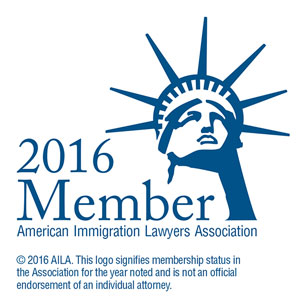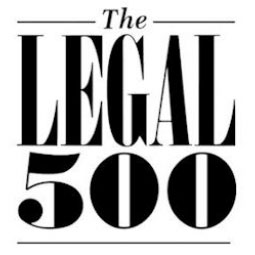CSPA Disharmony is More Beautiful Than Monotony Notwithstanding a Discrepancy between USCIS and DOS Policy in Protecting the Age of the Child
By Cyrus D. Mehta and Kaitlyn Box*
In early 2023, USCIS reversed its longstanding policy of recognizing only the Final Action Dates (FAD) in the State Department Visa bulletin as protecting a child’s age under the Child Status Protection Act (CSPA), and agreed to use the Dates for Filing (DFF) to protect the age of the child. This shift in policy allowed the age of many more children to be protected under the CSPA. USCIS acknowledged that:
“After the publication of the May 2018 guidance, the same applicant for adjustment of status could have a visa “immediately available” for purposes of filing the application but not have a visa “become available” for purposes of CSPA calculation. Applicants who filed based on the Dates for Filing chart would have to pay the fee and file the application for adjustment of status without knowing whether the CSPA would benefit them. To address this issue, USCIS has updated its policies, and now considers a visa available to calculate CSPA age at the same time USCIS considers a visa immediately available for accepting and processing the adjustment of status application. This update resolves any apparent contradiction between different dates in the visa bulletin and the statutory text regarding when a visa is “available.”
Cyrus Mehta had long advocated for the use of the DFF for CSPA calculation purposes, and discussed the implications of this policy change at length in a prior blog entitled “CSPA Disharmony: USCIS Allows Child’s Age to be Protected under the Date for Filing While DOS Allows Child’s Age to Be Protected under the Final Action Date”.
Now, USCIS without advance notice has again reverted to its prior policy, stating in an August 8, 2025 Policy Alert that:
… “a visa becomes available for the purposes of Child Status Protection Act age calculation based on the Final Action Dates chart of the Department of State Visa Bulletin. The new guidance applies to requests filed on or after August 15, 2025. We will apply the Feb. 14, 2023, policy of CSPA age calculation to adjustment of status applications pending with USCIS before August 15, 2025, as these aliens may have relied on that policy when they filed.
This policy update ensures both USCIS and the Department of State use the Final Action Dates chart in the Visa Bulletin to determine when a visa becomes available for the purposes of CSPA age calculation. This establishes a consistent CSPA age calculation for aliens who apply for adjustment of status and immigrant visas. The Feb. 14, 2023, policy resulted in inconsistent treatment of aliens who applied for adjustment of status in the United States versus aliens outside the United States who applied for an immigrant visa with the Department of State.”
This change will become effective for applications filed on or after August 15, 2025.
USCIS’ February 14, 2023 policy that used the DFF to protect the age of the child was salutary, and should have been left in place. This policy protected many more children from aging out, and had a clear legal basis since the DFF allowed one to apply for adjustment of status based on visa availability under INA 245(a)(3) while the child’s age was also frozen based on visa availability under INA 203(h)(1)(A).
The August 2025 policy reversal is ostensibly aimed at ensuring that both the USCIS and the Department of State (DOS) use the FAD chart to determine when a visa becomes available for purposes of the CSPA calculation. A discrepancy indeed existed between the USCIS and State Department policy, as DOS did not issue guidance that corresponded to USCIS’ February 14, 2023 guidance, nor did it update Foreign Affairs Manual (FAM) accordingly. However, both the USCIS and State Department could have instead used the DFF rather than the FAD to determine visa availability.
Notwithstanding the discrepancy between USCIS and State Department policy, using the DFF for CSPA calculation purposes benefited children in the U.S. in a nonimmigrant status whose age got protected under the DFF, and who sought to acquire permanent residence within one year of visa availability, even though their parents obtained an immigrant visa, and permanent residence, under the Final Action Dates some years later. It also benefitted the entire family if they were here in the US and all filed I-485 adjustment applications together as it kept them united and they were able to derive benefits from the I-485 such as work authorization and travel permission.
USCIS’ policy reversal will have significant implications for children whose age will no longer get protected under the CSPA. Children of parents who were born in backlogged countries such as India and China are likely to suffer the most severe hardship, as it may be many years before the FAD becomes available, resulting in the children aging out before their age can be protected under the CSPA. Children who may age out before their age can get protected under the CSPA may be reluctant to even file an adjustment of status application in the current climate, as denials if the children age out could result in them being placed into removal proceedings.
It bears considering whether the cruel policy reversal can potentially be challenged under the Administrative Procedure Act, arguing that the reversal was arbitrary and capricious as the USCIS did not provide a reasoned explanation for its action under DHS v. Regents of the University of California. In Regents, which was discussed in detail in a prior blog, the Court struck down the rescission of the DACA program on the ground that DHS failed to provide a reasoned explanation for taking this action. The Court also focused on the agency’s failure to factor in the reliance interests of DACA recipients, many of whom had enrolled in degree programs, embarked on careers, started businesses, purchased homes, and even married and had children, all in reliance on the DACA program.
The anomaly between the USCIS and DOS policy existed when the new policy was announced on February 23, 2023, and so to necessitate a reconciliation is a poor justification for reversing the policy. Nothing has changed since 2023. Moreover, even if USICS has provided an August 15, 2025 cutoff date, the reversal would still impact reliance interests as enunciated by the Supreme Court majority in Regents. The DFF will still allow applicants and their children to file I-485 applications after August 15, but once their children age out, their I-485 will get denied. Children are likely to be deterred from filing I-485 applications if there is a risk that they will age out before the FAD becomes current. Despite the weighty impact on reliance interests, USCIS has failed to provide a reasoned explanation for the reversal.
As the USCIS will continue to use the DFF to protect the age of the child until August 15, 2025, applicants who are eligible to file I-485 adjustment of status applications should do so immediately. After August 15, 2025, while a child may be able to file an I-485 under the DFF it will not protect the age of the child. If the FAD does not become current before the child becomes 21, or if the child turns 21 and cannot utilize the age protection formula under the CSPA, the child’s I-485 application will get denied. This could potentially jeopardize the child’s chances of changing to another nonimmigrant status such as F-1. Although the Board of Immigration Appeals (BIA) in Matter of Hosseinpour, 15 I&N Dec. 191 (B.I.A. 1975) recognized an inherent dual intent in all nonimmigrant visas, it may be not be recognized by this Administration under the circumstances of an I-485 that was filed and denied. If children proceed abroad for an F-1 visa they too risk refusal of the visa under INA 214(b) as they may not be able to rebut the presumption that they are intending immigrants.
*Kaitlyn Box is a Partner at Cyrus D. Mehta & Partners PLLC.




